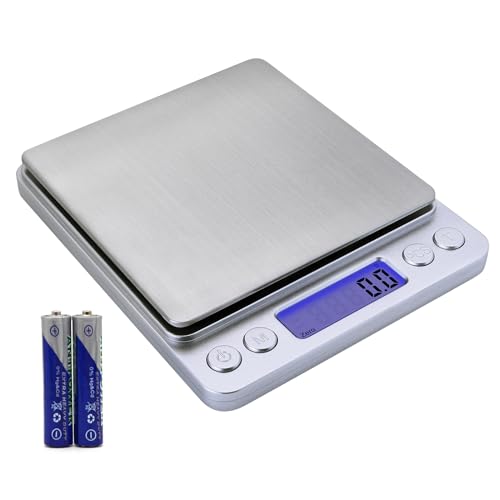I don't see anything wrong with those soaps. All the ingredients are listed, just because each type of EO used isn't included doesn't make it a lie. As far as the sweet mint goes, its probably just a blend of sweeter mint EO's. Nothing about about it makes me think of a sugar smell.
.
As you say, just because each type of EO used isn't included doesn't make it a lie, but it
does put it in violation of labeling regulations.
I also don't see any difference in listing EO blend then others who just list fragrance. Maybe they don't want to share the blends they are using so people can't try and copy it or maybe they are like 10 different EO's and it would be silly to list them all.
The natural almond scent could simply be a almond EO, it does exist. I know many companies are shady about the scents they use but you guys are starting to rip on someone just because you don't like their labels?
It's really not a question of ripping on someone, it's a question of a violation of the regulations. If you make soap and decide to sell to the public, the regulations are VERY specific. I'm going to quote from Marie Gale's book "Soap and Cosmetic Labeling".....I'm thinking that a proprietary blend of EOs would fall under "trade secrets" and this is what her book has to say about that...
"A trade secret ingredient or formula doesn't have to be listed on the ingredients listing: instead you can say "and other ingredients". However, in order to exempt listing an ingredient you must first get approval from the FDA. There is a very specific procedure for requesting exemption of an ingredient identity from public disclosure. The details are listed on the FDA website and available through local FDA offices. If you omit an ingredient as a trade secret without having prior approval from the FDA then the product is misbranded and in violation of labeling regulations."
Because they don't have anything listed as "and other ingredients", I would guess that they haven't gone through that process. Also, any person can be allergic to
any ingredient. It's never "silly" to list all of the ingredients. If someone buys your soap, and it contains an ingredient that they are allergic to, and they have a reaction, and that ingredient was not listed on the label....you'd better make sure you have good insurance.
Actually I love their labels and I think their soaps look great. If you mean their ingredients label, it's not ripping just some criticism, but I think that's only natural if you make soap too. Most list water because there is still some in the soap. It's just marketing, customers see water and think the product is watered down, and if they see fragrance they think it's chemical synthetics, and if they see sodium hydroxide they think it will burn their skin off. Truth is we have no idea if it's legit or not, it's just all speculation. I've seen the soaps in person and smelled them, they smell good and look good. Im not sure however, how they are mass producing but saying they only make soaps in small batches. The scents are very strong so either they are using a ton of eo and spending a fortune or they have a little help from fragrance oils, and there are natural fragrance oils. Who really knows, right? Nothing wrong with it, you just have to wonder why things are not listed.
I have a soap from shea moisture which i really really love, they also say eo blend but omg i've never once smelled eo like that and i'm pretty good at pegging them, plus it's super strong. they also say african black soap base but dont list the ingredients of the base.
We don't have a choice as to whether we list water or fragrance or sodium hydroxide. If you list ingredients, then every ingredient must be on the label. You don't get to pick and choose which to include. You can either list them as what goes into the pot...."Ingredients: Water, palm oil, coconut oil, sodium hydroxide, olive oil, fragrance, mica."
Or you can list the ingredients as they come out of the pot. Again quoting from Marie Gale's book,
"Soap is the result of the reaction between oil and lye, a process called "saponification". In casual conversation one can say that soap is "saponified oils", or to be even more detailed, a particular soap might be the "saponified oils of palm and olive" or "saponified palm and olive oils." These statements are correct, but it is not correct terminology for an ingredient list. "Saponified _____ oil" or "Saponified oil of _____ " is not listed as an ingredient in any version of the Cosmetic Ingredient Dictionary. The Cosmetic Ingredient Dictionary lists specific terms to describe the soap-result of saponification of a particular oil and sodium or potassium hydroxide. Examples: sodium palm kernelate, sodium cocoate, potassium olivate"
So there are variations in the way that you can choose to list your ingredients, but you have to choose one of the accepted ways. Just because a lot of people choose to skirt the rules, doesn't make them correct. And if you're selling to the public, well, we all know how sue happy people are these days. Yes, the regulations are incredibly specific, but once you get it down, it's really not that difficult, and then you can relax. If you have any questions, Marie Gale's book, "Soap & Cosmetic Labeling - How to Follow the Rules and Regs Explained in Plain English" spells it all out for you in great detail. Sorry this was so long, but there seem to be a lot of misconceptions about correct labeling practices.










































